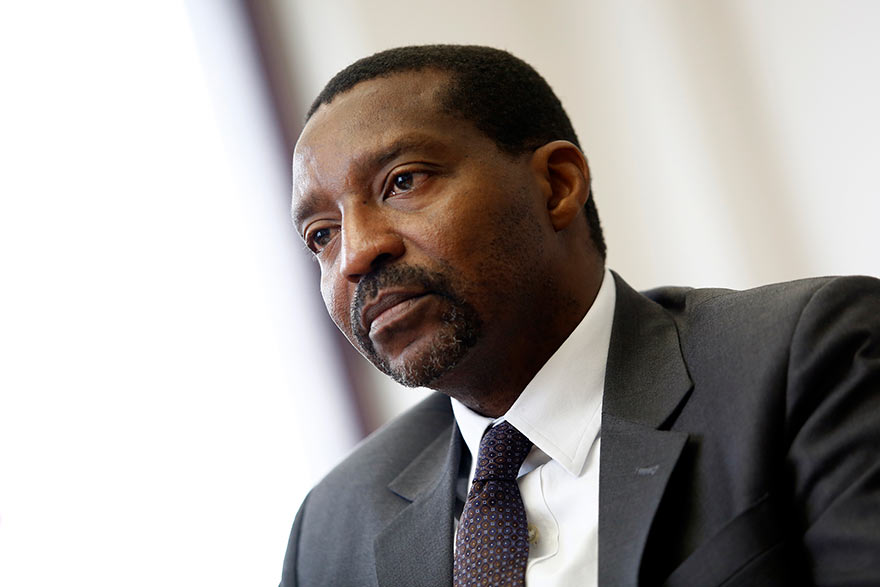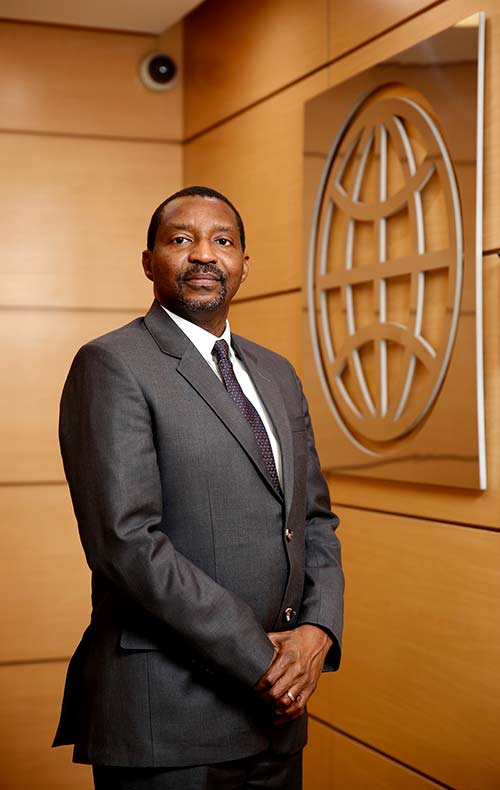Serbia’s robust response to the health pandemic has shown good results and enabled it to be among the first economies in Europe to re-open. We are now looking forward to Serbia’s return to focusing on the medium-term agenda, where the Bank’s strengths – technical advice based on global knowledge and targeted and prudent financing – can support Serbia’s speedy recovery and accelerated growth.
Prior to the outbreak of Covid-19, the World Bank had announced its plans to allocate $340 million in loans to Serbia in 2020 in order to help the country improve its business environment, infrastructure and mining. We spoke with Stephen Ndegwa, World Bank Country Manager for Serbia, about the impact of Covid-19 on Serbia and the new priorities of the World Bank in this context.
How did unfolding events impact on your plans, if at all?
We adjusted our activities to support the emergency response to the COVID-19 pandemic and its socio-economic impact, while our strategy in support of Serbia’s medium-term agenda to accelerate growth and improving livelihoods, including the interventions you mention, remains valid.
Besides the 92 million euro COVID-19 health emergency project approved on 26th May, the Bank advanced 20.8 million euros from Serbia’s Catastrophe-related budget support programme (CAT-DDO). Moreover, restructuring three of our existing projects will provide Serbia with an additional 26.5 million euros to respond to urgent needs. This means that nearly 140 million euros were made available to the government to help finance its response to, and recovery from, the COVID-19 crisis.
With the re-opening, we are discussing an acceleration of certain planned projects, including in support of macroeconomic stability, jobs- and material-intensive infrastructure rehabilitation/development, and more spirited action to build resilience, including in health systems, and climate action. We see these as necessary adjustments, but also as a bridge to the medium-term reform agenda, for example, as outlined in the World Bank’s report: New Growth Agenda, which remains an imperative in order for Serbia to prosper.
Considering the current developments in the Serbian economy, where do you see the role of the World Bank in helping the country to address challenges?
Serbia’s resolute response to the health pandemic has shown good results and enabled it to be among the first economies in Europe to re-open. Now that the worst of the first wave of the pandemic is behind Serbia, we look to Serbia’s return to focusing on the medium-term agenda, where the Bank’s strengths – technical advice based on global knowledge and targeted and prudent financing – can support Serbia’s ambitions.
The New Growth Agenda for Serbia aims at improving fundamentals – such as governance, regulatory quality, skills and access to finance – as crucial areas for putting Serbia on a trajectory of high growth
In this regard, the planned Public Sector Efficiency and Growth development policy loan will support reforms to sustain macroeconomic stability and enable public sector and business environment reforms to drive growth. In addition, we have several ongoing projects that help the public sector be more efficient, transparent and closer to citizens. Finally, we have several ongoing and planned projects that help to build and maintain physical infrastructure.
Given the novelty and unpredictability of the situation, to what extent can the Bank rely on its previous experiences? Which new policies/types of intervention may the Bank use?
I think the most recent event that most of us will remember is the Global Financial Crisis of 2008/09, when we saw a significant worsening of the global outlook, although most analysts would agree that the current crisis and its social consequences are likely to be more severe than in 2008/09. Some of the lessons learned from 2008/09 were the need to act quickly and have a coordinated approach to support aggregate demand. I think we also learned a lot about the need to strengthen financial sectors, and today financial sectors are in much better shape than in 2008/09.

Over the years of the Bank supporting countries to weather many different types of crises, we have learned quite a bit about how to design and implement interventions. It is important to target interventions so that only the intended groups benefit from the policies. It is tempting to go for universal support, which is easier to implement; but, given limited resources, targeted interventions are fiscally more sustainable, and maximise impact for a given level of resources.
We also recommend implementing time-bound interventions, since the current type and size of the support is only sustainable in the very short term. Finally, transparency and accountability will be key to improving the effectiveness of interventions, but also for increasing public support.
According to your estimation from the beginning of 2020, the Serbian economy could have grown by seven per cent if the state implemented reforms. In which aspects could the government still work on this reform agenda, under the new circumstances?
Working on the kind of reforms proposed in the New Growth Agenda is now even more important than before the crisis. The essence of those reforms is to put Serbia on a trajectory of high growth that can be sustained over the medium term. And for this, improving the fundamentals – first and foremost governance, but also regulatory quality, skills, access to finance – is crucial.
As the world emerges from the crisis, one trend that a lot of people are talking about is the need to adjust global supply chains. This includes both shortening the supply chains (i.e. for companies based in Europe moving some, or even the majority, of their production closer to home) and diversifying them (i.e. avoid concentrating most of the production in one geographical area). If this trend materialises, Serbia could potentially benefit. But this is not guaranteed – again, addressing the fundamentals is the key. So, if Serbia wants to benefit from the changing global economic landscape, the reforms set out in the New Growth Agenda will be critical.
Finally, the crisis is an opportunity to reset the economy by advancing long-overdue reforms for sustainable growth and achieving European standards of livelihoods – greening the economy, improving the quality and access to public services, such as health and education, and increasing public investment, including at the local level.
Given that all states are at present pressed to borrow money to help their economies survive, how much could Serbia move in that direction without jeopardising its fiscal stability?
Serbia entered this crisis in a relatively strong fiscal position. Since 2014 it turned a deficit of six per cent of GDP into surpluses of around one per cent in 2017 and 2018, slashing public debt from 67 to 53 per cent of GDP by 2019.
 This has allowed Serbia to put in place a generous support package, valued (including bank guarantees) at 11 per cent of GDP, significantly larger than other countries in the Western Balkans. The response to the crisis will have a high fiscal cost. The World Bank projects a fiscal deficit of between seven and eight per cent this year and debt levels (including guaranteed debt) increasing by over 10 percentage points of GDP in 2020, undoing much of the progress made since 2014. We do not doubt that these measures were necessary, as seen globally given the magnitude of the threat and impact.
This has allowed Serbia to put in place a generous support package, valued (including bank guarantees) at 11 per cent of GDP, significantly larger than other countries in the Western Balkans. The response to the crisis will have a high fiscal cost. The World Bank projects a fiscal deficit of between seven and eight per cent this year and debt levels (including guaranteed debt) increasing by over 10 percentage points of GDP in 2020, undoing much of the progress made since 2014. We do not doubt that these measures were necessary, as seen globally given the magnitude of the threat and impact.
Going forward, it will be important to prioritise public spending. There will be a premium on increasing the efficiency of public spending, prioritising public investments with high returns and enhancing transparency and accountability. Perhaps this is not a time to build the stadiums announced last year.
What are the possible scenarios when it comes to GDP growth in Serbia in 2021, and what would be the major factors leading to different outcomes?
The World Bank projects that Serbia’s economy will decline by 2.5% in 2020. This decline is slightly lower than the average decline for countries in the Western Balkans, at 3.1%. The most affected sectors will be manufacturing, affected by supply disruptions in value chains, as well as containment measures, and certain services sectors that require a physical presence, such as transport, tourism and non-essential retail.
This projection assumes that containment measures are gradually lifted in Serbia and across the world toward the end of the second quarter and that economic activity gradually recovers in the second half of the year. As the economy recovers, we project growth of four per cent in 2021.
A key concern is the health crisis quickly morphing into an economic crisis with significant social consequences, including an increase in poverty by two to four percentage points
There are also some potential benefits in the recovery phase for which Serbia should position itself. The increased possibility of bringing supply chains closer to major markets and avoiding the concentration of manufacturing in only a few countries or regions – the so-called ‘near-shoring’, as opposed to off-shoring of activities. This could mean increased investment and relocations of parts of supply chains closer to major markets, for example, to the Western Balkans, given their proximity to the EU. In thinking about this possibility, it is important to continue addressing many of the issues that have constrained investment in the past – because these will remain impediments to investors making decisions on whether to come to Serbia: the business environment, fragmented regional markets or the availability of skills.
Many countries, Serbia included, met the pandemic with a healthcare system more or less in tatters. Do you envisage stronger intervention of the World Bank in that sector?
The COVID-19 pandemic has indeed exposed the lack of preparedness of many public health systems across the globe. I would not say that Serbia’s system was ’in tatters’ – it was extremely stretched, but fast, corrective actions seemed to have paid off.
The Bank has supported improvements in the health sector in Serbia since 2003, with a focus on health financing reforms for better efficiency, quality, access and equity.
The just-approved COVID-19 emergency project will strengthen the national health system’s preparedness against subsequent pandemics. Investments under this project pandemic response simultaneously boost Serbia’s capacity to deal with everyday health burdens, especially the inordinate burden of non-communicable diseases.
To what extent could unemployment become an issue in Serbia?
A key concern is the health crisis quickly morphing into an economic crisis, with significant social consequences. World Bank simulations on the impact of the slowdown in growth suggest that poverty could increase by 125,000 people or two percentage points. In a more prolonged economic crisis, poverty could increase by four percentage points. We have seen unemployment increasing across the region, but the large support packages provided by many countries, including Serbia, may have prevented more economic and social suffering.
In the first phase, all countries, including Serbia, have focused their support on protecting incomes of firms and individuals, for example, by providing incentives so that firms do not lay off workers. As countries embark on an economic recovery phase, support should be provided to firms that are competitive and can quickly create employment, as well as to people that may have to find employment in different sectors. Continuing to implement the structural reforms agenda, which I highlighted earlier to explain how Serbia can achieve growth of seven per cent, will also contribute to more and better jobs.